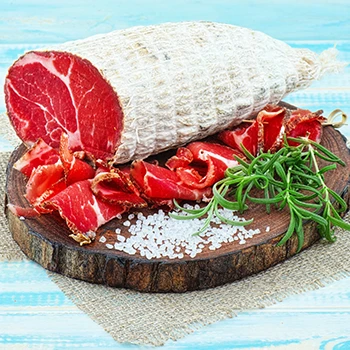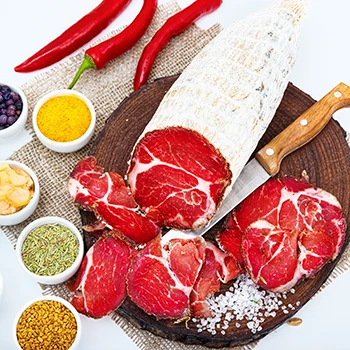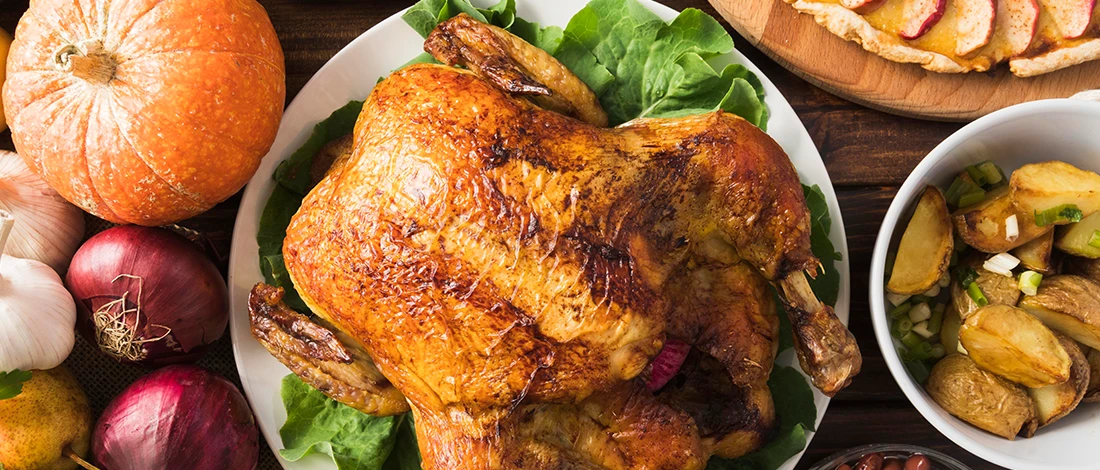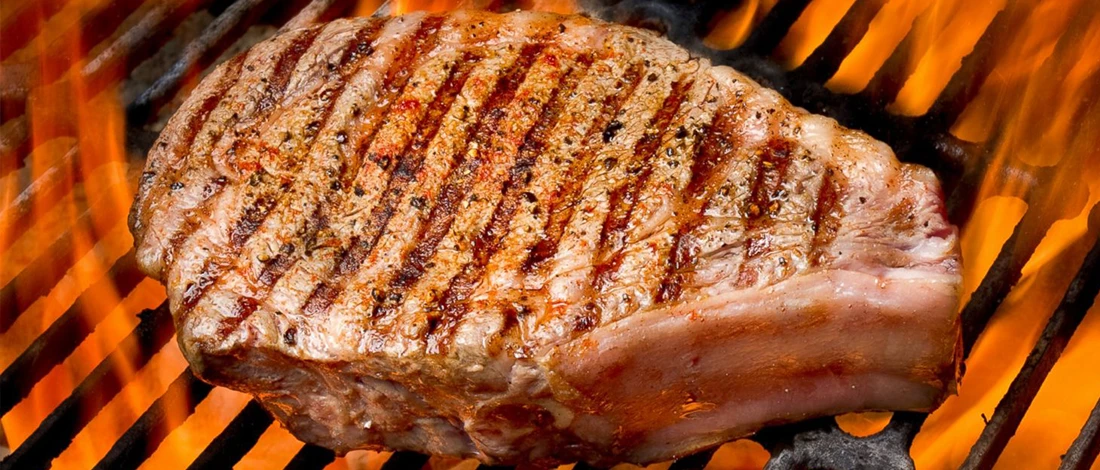If you’re a Sopranos fan, you already know Toni’s favorite salumi was gabagool. The actual name of gabagool is capicola - a kind of cured meat that falls between sausage and prosciutto.
During the decade I’ve been on a carnivore diet, I’ve tried all kinds of cured meats, including capicola. In fact, I eat capicola at least once a week.
I talked with my local deli owner to find out more about this delicious meat.
Here’s what I’ve found out.
Quick Summary
- Capicola is Italian cured meat, also known as coppa cotta, gabagool, capacolla, and other names.
- Capicola comes from the pig’s neck and shoulder.
- You can make capicola by using a roasting pan and coating the meat with herbs and spices.
What Is Capicola?

Capicola is cured Italian meat made from pork neck and shoulder cuts. It has a 30% fat to 70% lean ratio, which makes it very moist and tender. This meat is cured for ten days.
After that, it’s coated in black pepper or hot red pepper powder, fennel seed, coriander, and anise. Finally, it’s slow-roasted, so the end result is tender shoulder ham.
This cured cut uses meat from the shoulder or the neck of the pig because these cuts are especially tender, and this area has a lot of fat. The marbled fat tempers the flavor of the intense spices used during the curing process.
Capicola can also be cured after being brined or cooked. The meat got its name from the words capo, meaning head, and collo, meaning neck. It’s also known by other names, such as capocollo, capicolla, coppa cotta, and gabagoul.
Capicola comes from Piacenza in the north and Calabria in Italy’s south. The European Union granted a Protected Designation of Origin (PDO) to capicola from both of these areas [1].
This means this meat is important for the history and heritage of Italy, and only capicola from these regions can be sold under specific names.
You can find capicola in most Italian delis and gourmet food shops. It’s sliced very thin and commonly used in Italian sandwiches, such as panini, cold cuts sandwiches, and muffuletta. You can also serve it on its own as an appetizer with a baguette, mustard, and cheese.
“Capicola or capicollo is one of the number of types of Italian cured meats. This one comes specifically from the area of the pig between the neck and the middle rack of the pork shoulder.”
- Mashed, YouTube Channel
Related Articles:
How to Make Capicola?

You can make capicola yourself, but you need quality meat. ButcherBox is an online meat delivery service that sells sustainably sourced cuts, such as grass-fed beef, organic chicken, and more.
You make capicola by seasoning the meat using a mix of spices, curing it with a salt rub, seasoning again, stuffing the meat into a casing, and leaving it to hang for several months.
The specific process of making capicola varies from region to region and personal preferences.
In Italy, the pigs for making capicola have to be at least eight months old and weigh at least 300 pounds. These pigs usually come from large breeds in Italy’s south.
The muscles used for this cured meat run from the pig’s neck to the fourth or fifth rib of the shoulder of the neck (the top part of the loin). This part is used because it makes the most delicious meats.
Then, the butcher de-bones the meat and separates the fat. However, not all fat should be removed. There should be a three to four-millimeter thickness left to avoid drying out the meat during the seasoning process.
Here’s a step-by-step guide on how to make capicola:
- Season the cut of meat — Use red or white wine, garlic, herbs, and spices. Coriander, cinnamon, cloves, salt, pepper, sugar, and fennel are the most common.
- Massage the meat with a curing salt rub — Generously cover the meat with salt rub and leave it in the fridge for a few weeks. Cured meats need time to absorb the herbs and spices. Make sure the meat is wrapped tightly (you can use plastic wrap).
- Wash off the curing salt — Use water and vinegar to wash off the salt.
- Time for the second round of seasoning — Use a rub made from spices. Usually, pepper, juniper berries, and coriander are used.
- Stuff the capicola — Stuff the meat into collagen sheets or a casing made from the pig’s diaphragm. The casing holds the meat together and prevents contamination during the curing.
- Hang the sausage — Place it into a temperature-controlled room and cure it for six months. This makes the meat moist.
What Does Capicola Taste Like?
Capicola tastes slightly spiced and smoky. It tastes sweet when cured with black and hot with red pepper.
Capicola taste is smoky with a fatty and tender texture. The meat melts in the mouth, so this is a treat for taste buds.
Note: Hot capicola refers to American-made meat. It’s seasoned with red pepper, so you’ll feel a spicy kick when you eat it. This dry-cured version of capicola is considered gourmet food and isn’t the most affordable cured meat.
Capicola Nutrition Profile

Capicola is full of fat and salt. One slice of capicola has:
- 42 calories
- 2.7g protein
- 0.3g carbohydrates
- 3.2g total fat
- 214mg sodium
The amount of sodium is especially high considering this is only one slice, so enjoy capicola in moderate amounts [2].
Also, the fat and calorie content make this meat good for a low-carb diet, such as keto.
FAQs
What is the Difference Between Capicola and Salami?
The difference between capicola and salami is that capicola is a whole-muscle aged and cured pork meat, while salami is prepared like a sausage.
What is the Difference Between Capicola and Prosciutto?
The difference between capicola and prosciutto is that sea salt is used for seasoning prosciutto, and a range of spices are used for capicola. Prosciutto and capicola are both used for making charcuterie boards, but prosciutto has a buttery texture, and prosciutto capicola is more tender.
Is Capicola Ham or Salami?
Capicola is ham. It’s comparable to prosciutto, as it’s also thin-sliced and used in similar dishes.
What Do You Eat Capicola With?
You eat capicola with cheese, mustard, and baguette.
References:
- https://www.dopitalianfood.com/en/brands-dop-italian-food/sausages
- https://www.nutritionix.com/food/capicola








